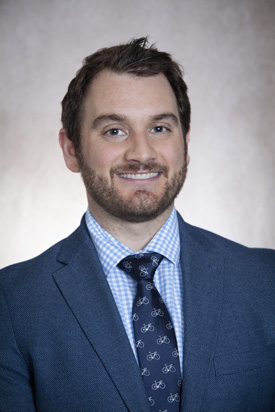- Apply
- Visit
- Request Info
- Give
Eastern Professor Publishes on Right-to-Carry Laws and Workplace Homicides
Published on November 06, 2019

Mitchell Doucette, health sciences professor at Eastern Connecticut State University, recently authored a research paper in the American Journal of Public Health on the relationship between Right-to-Carry (RTC) laws and workplace firearm homicides.
Titled "The Impact of Right-to-Carry laws on Firearm Workplace Homicides: A Longitudinal Analysis," the paper analyzes such workplace homicides from 1992-2017 in the United States. The article can be viewed at https://ajph.aphapublications.org/doi/10.2105/AJPH.2019.305307.
Doucette's research is the first to investigate the connection between RTC laws and workplace homicides committed by firearms. RTC laws, also known as Concealed Carry, remove barriers to legally concealed handgun carrying.
States with RTC laws issue concealed-carry permits on a shall-issue basis, according to Doucette, meaning local authorities have no discretion over who is given a permit, or they do not require a permit to carry a concealed handgun. Forty-two states have RTC laws as of 2018.
Doucette gathered more than 25 years of information and found that states with RTC laws had a 29 percent increase in workplace homicides in comparison to states without such laws. The increase in workplace homicides was consistent across several statistical approaches, adding plausibility to his study's findings.
Doucette used multi-level generalized linear models to estimate the average effect of having a Right-to-Carry law on workplace homicides. He also used a random-effect meta-analysis technique to quantify state-specific estimates of the policy effect.
The American Journal for Public Health is a leading public health journal that covers health policy and public health. Its main goal is to increase public health policy, research, practice and education.


